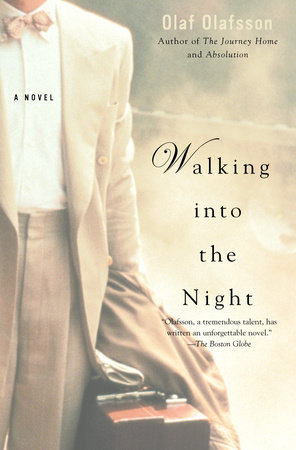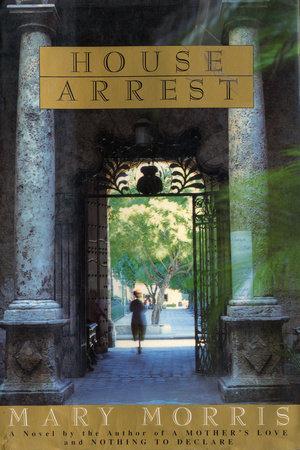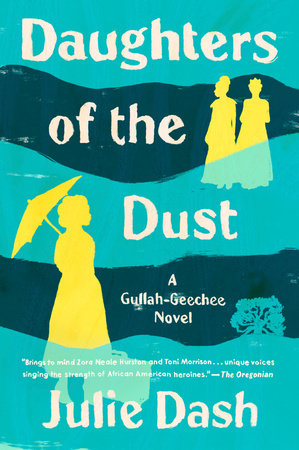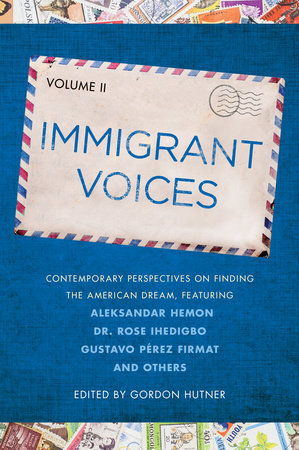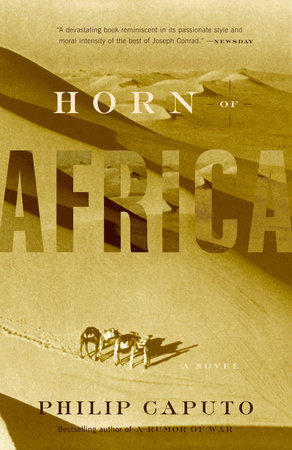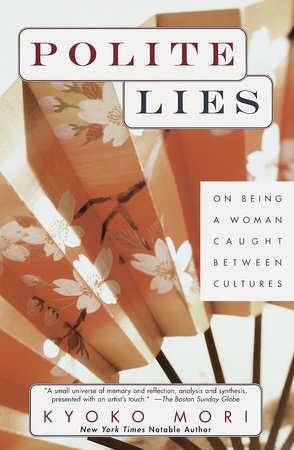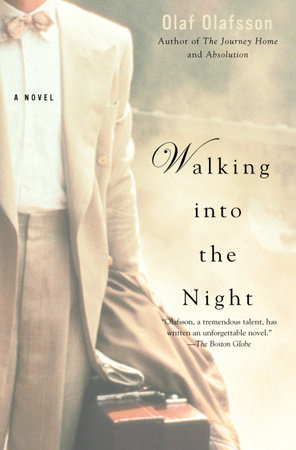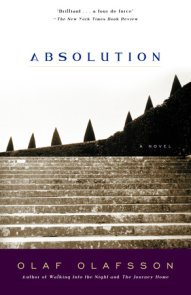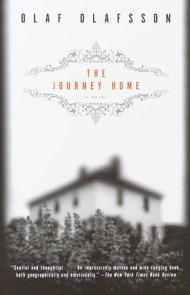Author Q&A
A conversation with Olaf Olafsson
Author of WALKING INTO THE NIGHT
Walking into the Night follows Kristjan Benediktsson as he flees his home in Iceland and ultimately ends up as William Randolph Hearst’s butler in San Simeon, CA in the early part of the 20th century. Can you tell us a bit about his character and motivations?
Kristjan – or Christian Benediktsson as he is known here – leaves his family in Iceland, his wife and children, when everything seems to be in good order. The time is the early nineteen twenties. He’s a successful businessman, married to a woman who seems to love him, the father of four children he adores. But, nonetheless, he walks out on them in the middle of the night when they’re all sleeping, catches a ship that’s leaving for Copenhagen at dawn, and from there continues to New York. He never returns. He never lets them know what happened to him, why he left, where he is. For all they know, he might be dead. But then there are rumors and his wife goes to New York looking for him.
When the book begins, Christian is William Randolph Hearst’s butler in the castle at San Simeon. It’s 1937, a problematic time in Hearst’s life. No one at San Simeon knows Christian’s story, but it catches up with him and now he has to confront it.
His motivations? I guess the real reason for writing the book was that I wanted to understand them. And they’re complex, maybe even nonexistent, for sometimes the most dramatic events in one’s life happen without rhyme or reason, but are products of mistakes or accidents, happenstance, our many imperfections.
Walking into the Night is your third novel, and a bit of a commercial departure from your previous novels. Can you tell us a little about what inspired you to write a novel of San Simeon and to follow the mental/physical history of William Randolph Hearst’s butler? What sort of research did you do?
A few years ago a friend of mine decided to tell me his grandfather’s story. This friend is a fellow Icelander, and head of the rehabilitation unit at Mt. Sinai Hospital here in New York. I suspected right then that I would use this story one day, expecting to be able to file it away for a while, for months if not years. But the next day it was still very much in my mind and the day after that as well, and wouldn’t leave until I started to pay it some attention.
I’ve tried to understand what it was that captivated me. While there were many aspects of this man’s life and story that were fascinating, I think it was the disappearing act that did it. How can you leave your children like that? What was it in his seemingly perfect life that drove him away? Did he maybe never intend to leave for good? And how did he feel ten, twenty years after having walked into the night and neither heard from nor spoken to his family again? These questions occupied me and wouldn’t let go until I started creating a character – of my imagination since I didn’t know my friend’s grandfather, Arni Benediktsson – who would go through something like this.
I did a lot of research. Arni Benediktsson’s family was very helpful to me, I can’t thank them enough. But I had to study Hearst as well and would highly recommend his biography, The Chief by David Nasaw.
What does Christian’s relationship with Hearst tell us about his character?
Hearst comes across as quite an intimidating, difficult man, yet Christian has been working for him, and managing to maintain a good relationship with him, for many years. I think there’s something about Hearst that suits his character. We’re given hints elsewhere in the book that Christian finds it difficult to be the boss, that he’s prone to ingratiating himself with people. At one point he describes himself in disgust as a fawning, subservient character. In that sense Hearst is the perfect foil for him. Pandering to Hearst’s demands occupies his thoughts and stops them from straying to painful memories, takes away the necessity for independent thought or action. The old man provides a refuge and a sense of security. And the two men seem to have some sort of understanding, some empathy between them.
The women in Christian’s life are vastly different from one another–can you tell us about Elisabet, Klara, and even Marion Davies? And how do their personality traits impact Christian’s decisions?
I don’t want to give away too much of the story but Christian’s wife Elisabet is a composed, enigmatic figure, no less enigmatic to her husband than to the readers of the story. Her family feels she has married beneath her, and Christian seems never to be able to relate to her as a social equal, he always feels she is too good for him. There is something unreachable, untouchable in her nature. Even when they make love he feels that she’s detached. Christian’s decision to walk out on her is consistent with this feeling that she never really needs him. He’s a man who needs to be needed.
Klara is a very different proposition – sensual, fragile. Christian seems able to relate to her as an equal, despite her pretensions to grandeur. He knows that she loves and needs him, and senses that she can understand him in some way that Elisabet never could. He’s so afraid of Elisabet’s pity, whereas Klara seems to offer non-judgmental comprehension.
Marion is perhaps more reminiscent of Klara than Elisabet. Although she’s Christian’s social superior due to her position as Hearst’s mistress, she is needy and damaged, and there seems to be a certain frisson between them. Perhaps his final decision is partly prompted by the attraction she seems to feel for him, which would put him in an untenable position with Hearst.
Rather than simply recreating the life of Christian chronologically, you chose a third person narrative interspersed with flashbacks told through personal letters never sent. Why did you choose this structure for Walking into the Night? What is the significance of telling the story in this manner?
I thought long and hard about the structure of the book. I always try to have it firmly in my mind before I start writing in earnest. Using the first and third person allowed me to keep a certain distance from Christian and his surroundings when I needed to, enabled me to shift the focus from one person to another and one period to another, but at the same time provide a glimpse into his thinking which was crucial to understanding the man.
Place figures centrally in the novel whether it is a fishing village in Iceland, Reykjavik, New York City, or the Southern Californian estate of San Simeon. What is the importance of each place and its role in the context of the entire novel?
The places change but the question is whether the protagonist does. The story itself dictated the scenery; there is a great contrast between Eyrarbakki, a small fishing village about 30 miles from Reykjavik, and Hearst’s castle at San Simeon, which I was very pleased to be able to use in a book. I had visited there many years ago and taken many mental pictures there, stored them away in case I had the opportunity to find a place for them later. I guess in that sense I’m like a junk dealer, picking up bits and pieces in the hope that I can find use for them later.
I suppose you could say that the Icelandic settings of Eyrarbakki/Reykjavik represent a trap to Christian; they’re too physically small and socially confining for his nature, he can’t break free of his background and become his own man there. Whereas New York, like Copenhagen, provides freedom for him to spread his wings and shed responsibility, but in the end it offers dislocation, a kind of limbo. San Simeon, on the other hand, is like an island out of time and out of mind, a refuge, somewhere to hide from the world and the fallout from what he’s done. Ultimately, however, there’s no escape from life, and the outside world encroaches even on this sanctuary.
Iceland is a recurring character in your fiction–what ties do you still have to your homeland?
I’ve never tried to shed my roots. I was born in Iceland, spent my youth there, have a house there and a family as well. Living between two worlds is something I’m used to by now, having lived here for half my life, first in Boston, then California, but for the last 15 years in New York.
Birds are a recurring motif throughout WALKING INTO THE NIGHT. What do they symbolize and what is their significance to the protagonist and to the novel?
People have for a long time associated birds with freedom, but in Walking Into the Night I think they play many roles, in some instances symbolic but they’re also an evocation, birds for birds’ sake.
Birds reveal aspects of Christian’s character. He feels some affinity with birds of prey like the eagle and hawk. It’s perhaps significant that when he first meets his wife he’s engaged in drawing an eagle, yet during his marriage he seems to concentrate on gentler birds. And he feels himself that his emotional state is revealed through the success or otherwise of his drawings of birds. He takes up the hobby again towards the end of his time at San Simeon. His progress in rediscovering his old skill in some sense mirrors his progress in unburdening his feelings in his letters. And the last bird he draws before breaking free is again a bird of prey, the hawk.
What does Christian represent? Is he an everyman? Is he a good Christian, as his name implies? Is he a hero?
The author has to believe that his protagonist is a decent man, regardless of whatever mistakes he may have made in his life. He is an everyman in the sense that strange things happen to almost everyone and no one lives his life in perfect agreement with himself and others. I would hardly call him a hero, though I certainly don’t think he’s the opposite. Aren’t most people both – heroes and cowards, depending on the circumstances?
What is next for Olaf Olafsson?
When I get Christian out of my mind, I’ll start another book. Till then, I’ll walk with him, if not into the night, then at least into some of the bookstores.
